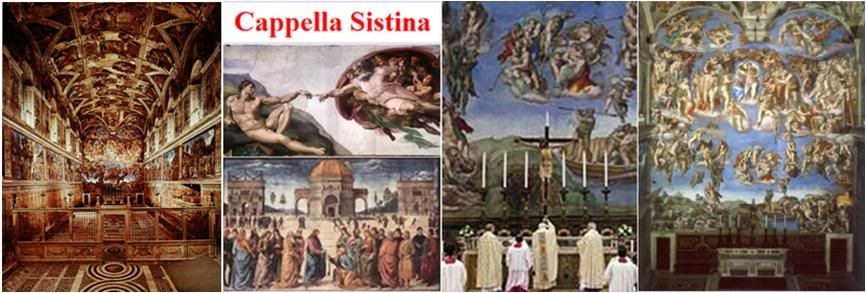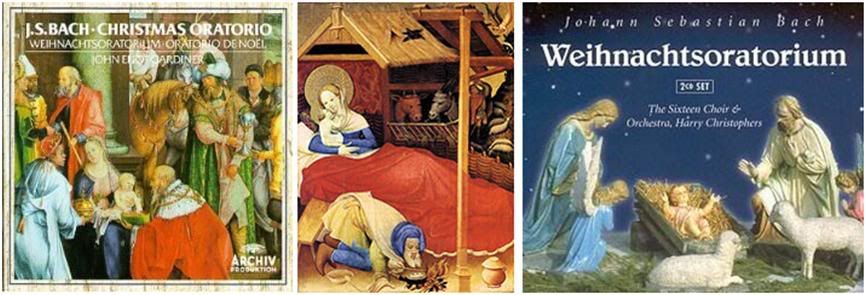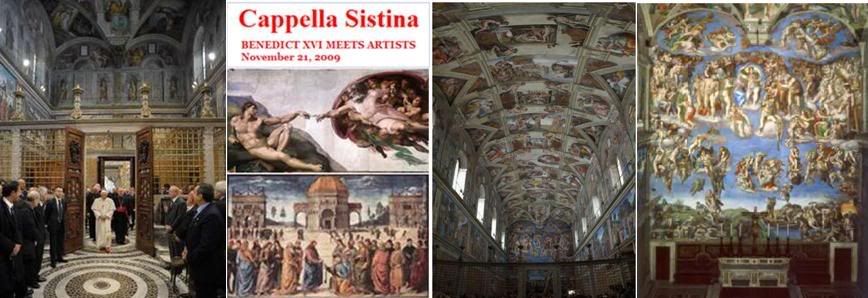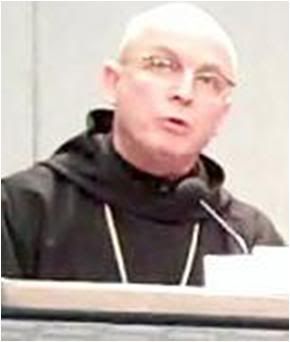 Bach's 'Christmas Oratorio'
Bach's 'Christmas Oratorio'
at the Sistine Chapel tomorrow
in honor of Benedict XVI
by Marcello Filotei
Translated from
the 12/4/09 issue of

Is Bach's 'Christmas Oratorio' really an oratorio or a collection of cantatas? Certainly it is largely a collection of profane works that have been given a 'sacred' destination.
This has been common practice in various eras, and has been called 'parody' without any critical connotation. But it does stimulate reflection on the infinite question of the meaning of music and whether it is possible to give any piece of music a single interpretation.
According to the 19th-century Viennese critic Edward Hanslick, who was a firm Brahms admirer, music in itself does not express any sentiment other than what its composer may choose to give it by assigning it a test, a title, or any identifying reference
[the usual term used is 'programmatic'].
It is a complex question and one of the best ways to confront it is to listen to works which help reflecting on it.
An occasion to do this is a concert in honor of Benedict XVI which will take place Friday evening, Dec. 4, at the Sistine Chapel, to mark the 60th anniversary of the Federal Republic of Germany and the 20th anniversary of the fall of the Berlin Wall.

The first and third cantatas of Bach's Oratorio will be performed by the Augsburger Domsingknaben [Boys Choir of Augsburg Cathedral] and the Residenz Chamber Orchestra of Munich under Reinhard Kummler, in the presence of the Pope and German President Horst Koehler.
The abridgement is not unusual because structurally - even if Bach underlined in the foreword to his original score, that the work has a unitary course - the Oratorio is constructed as a sequence of six cantatas meant to be executed between December 23 and January 6, as it was performed the very first time in Leipzig in December 1734 to the Feast of the Epiphany in 1735.
In the first cantata, which narrates the birth of Jesus, Mary is depicted in a double role: as a mother concerned for the destiny of her Son, and as the first believer, the origin of the faith, 'spouse of Christ'.
This is announced in the contralto aria "Bereite dich, Zion, mit zärtlichen Trieben, / Den Schönsten, den Liebsten bald bei dir zu sehn! ("Prepare yourself, Sion, with tender desire./ To welcome soon He who is the most beautiful and the most beloved") which also underscores the importance of the contralto voice in the entire work.
The text calls on the city to make itself beautiful to receive its divine spouse, but to the same notes, in
Hercules at the crossroads [the profane cantata from which the aria comes], the protagonist expresses very different states of mind as she must tear herself away from the fascination of an insidious personage: "I will not listen to you, I want nothing to do with you, despicable Lust!"
Which means that perhaps Hanslick was right to say that any musical phrase may mean anything. But on the other hand, Bach did create a tonal arrangement that was different from from the original, substituting for the Christmas Oratorio the second violins with the French horns, modifying the musical phraseology and adopting other orchestral strategies to make the Marian aria more ethereal.
In short, although the so-called 'affect theory' of music - according to which specific musical figurations are able to evoke corresponding states of mind - may have been in full vogue in Bach's time, does not really hold true all the time, the opposite is not necessarily true.
[I think the 'affect theory' originally had to do with the tonalities suggested by the different musical keys, both major and minor - when it is possible to describe the specific mood generally elicited by a specific key. But it can all be modified by various 'orchestral strategies' and arrangements.]
Simplification hardly ever does justice to art. The important thing is that in the Christmas Oratorio, Bach succeeds to impose a profound coherence within each cantata as within the entire work.
Mary is one of the reference points. The third cantata, on the adoration of the shepherds, quickly shifts the focus on the Madonna. In the aria "Schließe, mein Herze, dies selige Wunder / Fest in deinem Glauben ein!" ("Embrace, my heart, this miracle of beatitude/ firm in your belief), she perceives the grandeur of the moments she is experiencing.
From his notes, we learn that he had thought of full heavy orchestration but decided instead to rely on the intimacy of teh contralto voice with violin obbligato. It is a moment of reflection that balances the grandiosity of both extremes of the cantata, which is built on luminous choral interventions.
This is a symmetry found in the first three cantatas of the Oratorio and confirms the unity of the work's conception. So perhaps, the Christmas Oratorio is really an oratorio, not just a collection of cantatas. Or, it really does not matter.
Here's a belated report after the Sistine Chapel meeting with artists, but something to be treasured, because it is not so much about that particular event alone but what it shows about Benedict XVI and his personal gifts - not least of all, his personal holiness - as well as his vision for the Church.
 American monk's tribute
American monk's tribute
to Benedict XVI

Vatican City, Dec 2, 2009 CNA) - On November 21, Pope Benedict XVI attracted the eyes of the world to the Sistine Chapel where he welcomed a group of 250 international artists and urged them to renew an old friendship in the "quest for beauty."

CNA interviewed Abbot Michael John Zielinski, Vice President of the Pontifical Council for the Cultural Heritage of the Church and Sacred Archeology, for further insight into the meaning of this 'quest' and its significance in this Papacy.
Commenting on the
via pulchritudinis, beauty as a way to God, and the Holy Father's recent emphasis on it, the Benedictine abbot replied, "This is nothing new. Take a look at Pope Benedict XVI's liturgy.
The Pope's liturgy is not a return to tradition, it's the way to tradition. It is clearly the expression of... continuity. He's bringing out, as it were, making manifest the way of beauty to God."
Zielinski then mused on the Pope's awareness.
"Have you seen him around people? He listens very carefully. He observes.”
The abbot recalled that during the Pope's audiences, “he has these penetrating eyes. He doesn't observe the mass (of people), he observes the individuals... In his spiritual life, he is also very observant. He understands the needs of the Church."
"I think we'll truly understand this Pontificate in the future because he's taking us to our principles," opined the abbot. "In a world where there's inflation of words and images, his life of silence, prayer and study is truly a prophetic act today."
Abbot Michael John alluded to a quote from Thomas Merton, the 20th Century Catholic writer, who once said, "prayer is losing time for God."
"The Pope believes that 'losing' that time is important... You are prepared for the next life in that time."
You might notice also, said the Benedictine, that the Pope's "physical self is not over the top, you never see him moving about (exaggeratedly)..., whereas his thought is extensive, it has infinite horizons."
"His Pontificate is so different from the last one and yet so complementary."
The abbot remarked that there is a reform going on in the Church, "the reform of Benedict XVI."
Abbot Michael John said we will soon begin to see the fruits of the Pope's “reform.” "He's preparing the younger generations. He's offering them a vision, a vision of life, the world and the church and what it means to be a Christian today. He's preparing us, opening the eyes of our hearts.”
“The vision," Zielinski added, "is a hidden sense, a hidden desire, that of energy and force, and from this vision will come forth new life, ... new forms, new expressions, new representations."
"In Australia at World Youth Day, the young boys and girls returned home with eyes full of vision, and now," he said, "the world is waiting to see what that vision is going to produce; they'll write books, write music, build their houses, churches and cities."
"Hopefully, it will be a life of peace and justice, ... a life that can give witness to the Giver of life."
[Modificato da TERESA BENEDETTA 05/12/2009 18:13]